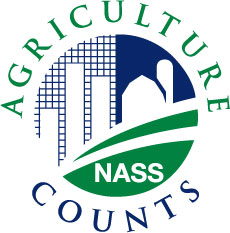United States Census of Agriculture
United States Census of Agriculture is a decennial census mandated by law, specifically Title 7 of the United States Code. It aims to gather comprehensive information on the agricultural sector of the United States, covering aspects such as farm operations, production practices, and economic data. Conducted by the United States Department of Agriculture's National Agricultural Statistics Service (NASS), the census provides a detailed statistical representation of the agricultural landscape, influencing policy decisions, research, and development in the agricultural sector.
History[edit | edit source]
The first Census of Agriculture was conducted in 1840 as part of the Sixth Decennial Census of Population. Initially, it was carried out by the United States Census Bureau. However, in 1997, responsibility for the Census of Agriculture was transferred to the NASS, reflecting the specialized nature of agricultural data collection and analysis.
Purpose and Use[edit | edit source]
The primary purpose of the Census of Agriculture is to collect, analyze, and disseminate data on the agricultural sector, including land use and ownership, operator characteristics, production practices, income, and expenditures. This data is crucial for:
- Developing and evaluating policies aimed at supporting the agricultural sector
- Assisting in research and education on agricultural practices and economics
- Guiding investment and funding decisions in agricultural infrastructure and services
- Informing environmental conservation efforts related to agriculture
Data Collection[edit | edit source]
Data for the Census of Agriculture are collected through surveys sent to all known farms and ranches in the United States. A farm is defined as any place that produces and sells, or normally would produce and sell, $1,000 or more of agricultural products during the census year. The census covers a wide range of topics, including but not limited to:
- Land use and ownership
- Crop production
- Livestock and poultry numbers
- Farm labor and expenditures
- Farm income
Challenges and Criticisms[edit | edit source]
Despite its importance, the Census of Agriculture faces challenges such as declining response rates and the need for data confidentiality. Additionally, there are concerns about the accuracy and timeliness of data, given the rapidly changing nature of the agricultural sector.
Recent Developments[edit | edit source]
The most recent Census of Agriculture was conducted in 2017, with the results released in 2019. It highlighted trends such as an increase in the average size of farms, a slight decline in the number of farms, and a continued aging of the farm population. The NASS is continually working to improve the methodology and coverage of the census to provide more accurate and relevant data.
Future Directions[edit | edit source]
Looking forward, the Census of Agriculture will continue to evolve to meet the changing needs of the agricultural sector. This includes leveraging new technologies for data collection and analysis, as well as addressing emerging issues such as sustainable agriculture practices and the impact of climate change on farming.
Search WikiMD
Ad.Tired of being Overweight? Try W8MD's physician weight loss program.
Semaglutide (Ozempic / Wegovy and Tirzepatide (Mounjaro / Zepbound) available.
Advertise on WikiMD
|
WikiMD's Wellness Encyclopedia |
| Let Food Be Thy Medicine Medicine Thy Food - Hippocrates |
Translate this page: - East Asian
中文,
日本,
한국어,
South Asian
हिन्दी,
தமிழ்,
తెలుగు,
Urdu,
ಕನ್ನಡ,
Southeast Asian
Indonesian,
Vietnamese,
Thai,
မြန်မာဘာသာ,
বাংলা
European
español,
Deutsch,
français,
Greek,
português do Brasil,
polski,
română,
русский,
Nederlands,
norsk,
svenska,
suomi,
Italian
Middle Eastern & African
عربى,
Turkish,
Persian,
Hebrew,
Afrikaans,
isiZulu,
Kiswahili,
Other
Bulgarian,
Hungarian,
Czech,
Swedish,
മലയാളം,
मराठी,
ਪੰਜਾਬੀ,
ગુજરાતી,
Portuguese,
Ukrainian
Medical Disclaimer: WikiMD is not a substitute for professional medical advice. The information on WikiMD is provided as an information resource only, may be incorrect, outdated or misleading, and is not to be used or relied on for any diagnostic or treatment purposes. Please consult your health care provider before making any healthcare decisions or for guidance about a specific medical condition. WikiMD expressly disclaims responsibility, and shall have no liability, for any damages, loss, injury, or liability whatsoever suffered as a result of your reliance on the information contained in this site. By visiting this site you agree to the foregoing terms and conditions, which may from time to time be changed or supplemented by WikiMD. If you do not agree to the foregoing terms and conditions, you should not enter or use this site. See full disclaimer.
Credits:Most images are courtesy of Wikimedia commons, and templates Wikipedia, licensed under CC BY SA or similar.
Contributors: Prab R. Tumpati, MD

